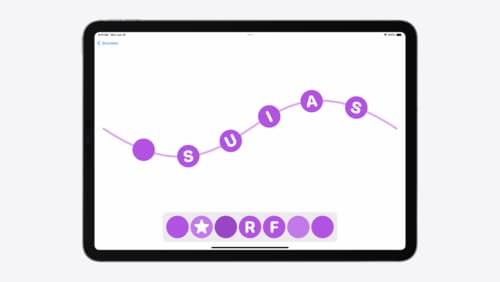How SwiftUI works
Asked on 2024-09-06
1 search
SwiftUI is a framework for building user interfaces across all Apple platforms using a declarative Swift syntax. Here are some key aspects of how SwiftUI works:
-
Declarative Syntax: SwiftUI allows you to describe what your UI should look like and how it should behave. You define views using a declarative syntax, which means you specify what you want to display, and SwiftUI takes care of the rendering. This approach contrasts with imperative UI frameworks where you have to specify how to perform each step of the UI update.
-
Composition: SwiftUI views are compositional, meaning you can build complex interfaces by combining simpler views. This modular approach allows for better code organization and reuse. For example, you can use custom views in lists or other containers to create advanced UI structures.
-
State-Driven: SwiftUI is state-driven, which means it automatically updates the UI when the underlying data changes. This reduces boilerplate code and helps prevent bugs related to UI updates. When the state of a view changes, SwiftUI efficiently updates the UI to reflect those changes.
-
Cross-Platform: SwiftUI provides a common set of components that work across all Apple platforms, but it also includes platform-specific APIs to take advantage of unique features. For instance, you can use the digital crown on watchOS or adapt navigation views for different devices.
-
Animations and Transitions: SwiftUI supports animations and transitions, allowing you to create smooth and interactive UI experiences. You can wrap state changes with animations to apply default or custom transitions.
For more detailed information, you can refer to the SwiftUI essentials session from WWDC 2024, which covers the fundamentals of views, built-in capabilities, and cross-platform considerations.

Enhance your UI animations and transitions
Explore how to adopt the zoom transition in navigation and presentations to increase the sense of continuity in your app, and learn how to animate UIKit views with SwiftUI animations to make it easier to build animations that feel continuous.

SwiftUI essentials
Join us on a tour of SwiftUI, Apple’s declarative user interface framework. Learn essential concepts for building apps in SwiftUI, like views, state variables, and layout. Discover the breadth of APIs for building fully featured experiences and crafting unique custom components. Whether you’re brand new to SwiftUI or an experienced developer, you’ll learn how to take advantage of what SwiftUI has to offer when building great apps.
